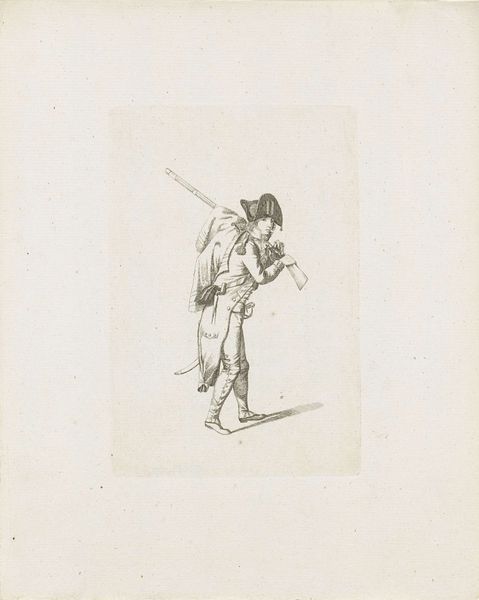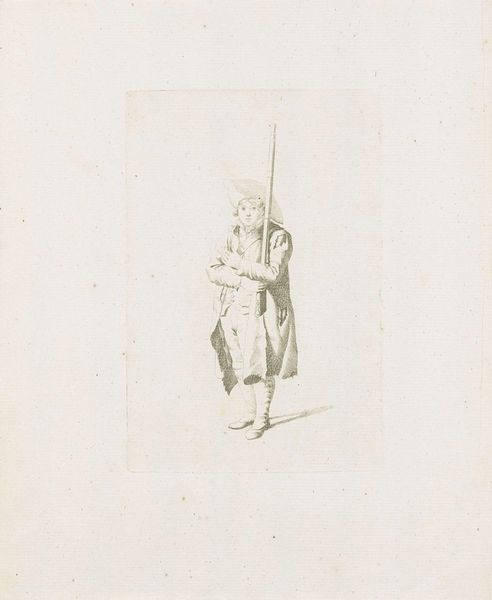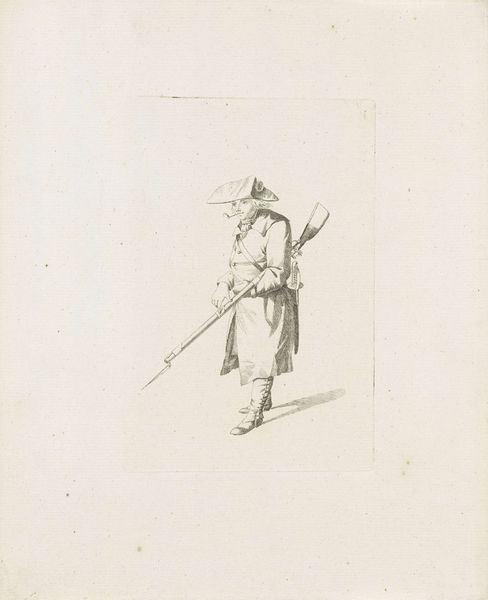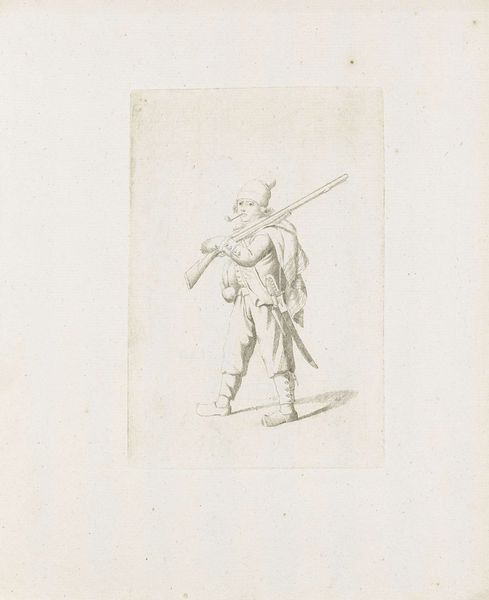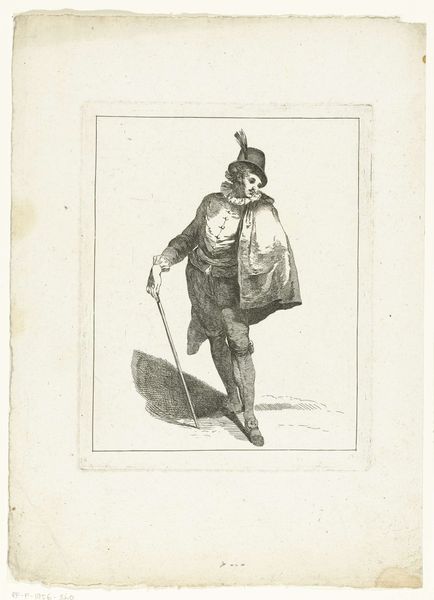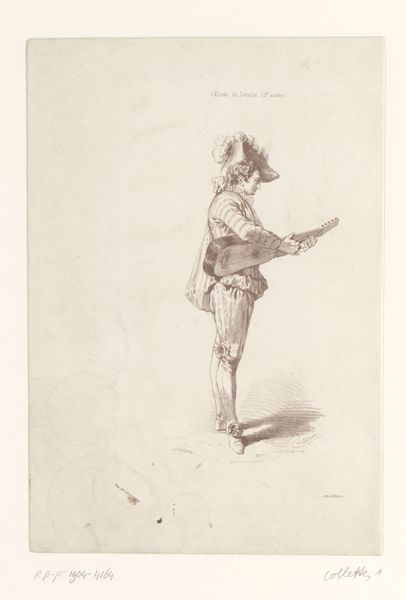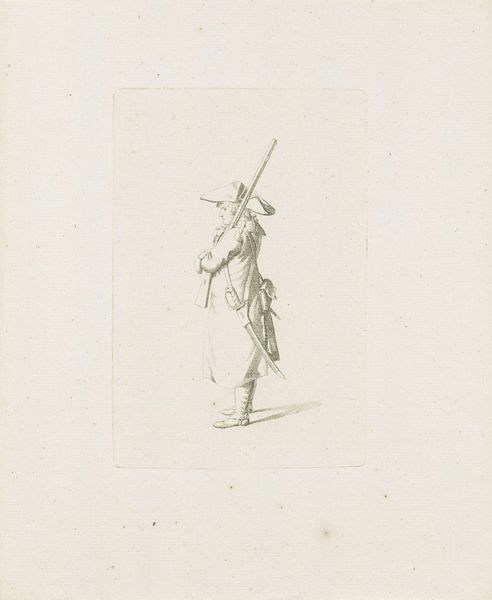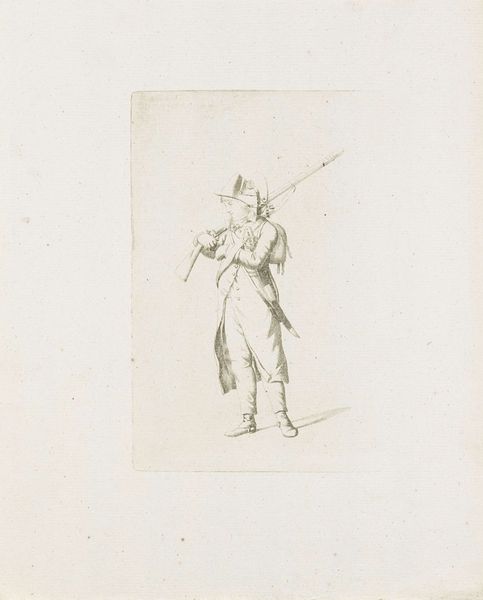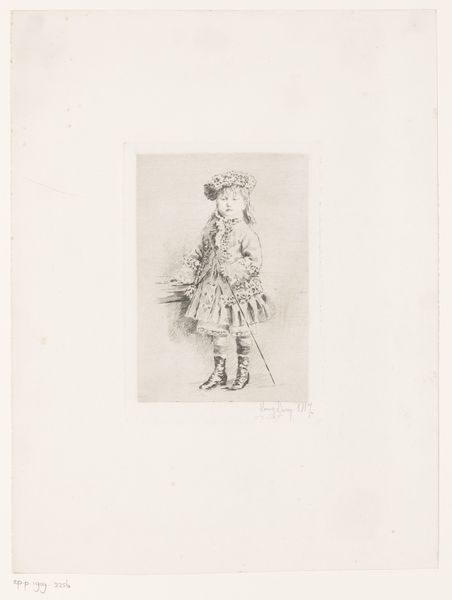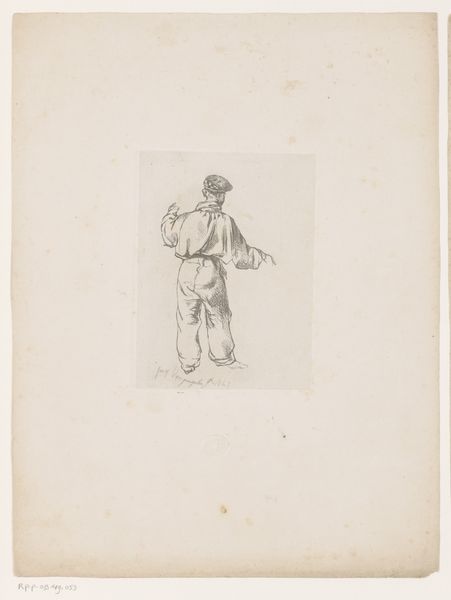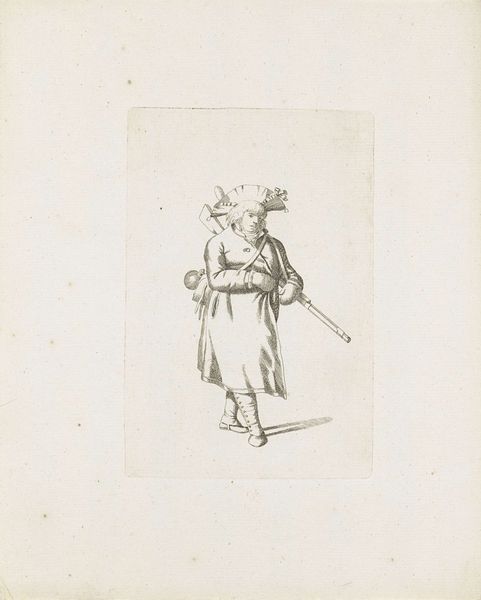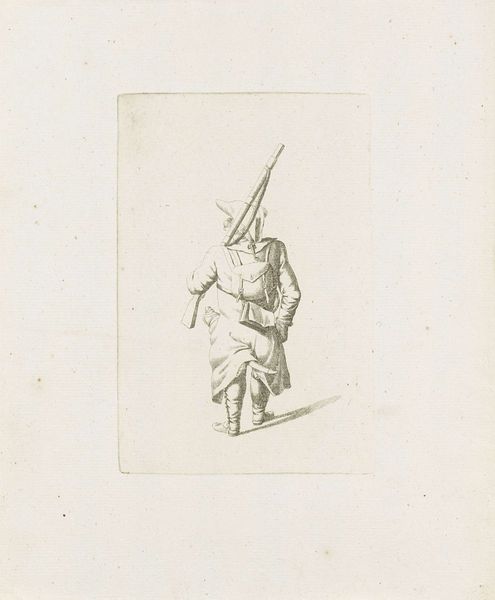
drawing, print, paper, pencil, graphite
#
portrait
#
drawing
# print
#
pencil sketch
#
figuration
#
paper
#
pencil drawing
#
pencil
#
graphite
#
genre-painting
Dimensions: 158 × 81 mm (image); 278 × 182 mm (sheet)
Copyright: Public Domain
Curator: Looking at this image, what strikes you first? Editor: The starkness, I think. The thin pencil lines barely containing the figure, it gives a feeling of precariousness. A solitary figure outlined on what seems to be bare paper…what can you tell me about it? Curator: This is "Punchinello", a pencil drawing created around 1850 by Ernest Meissonier. It is currently housed at the Art Institute of Chicago. Editor: Punchinello… immediately I think of Punch from Punch and Judy, though this fellow seems less overtly mischievous, more introspective. He cuts a lonely figure; the tall hat, the costume, the suggestion of a sword. Are we meant to see him as powerful or clownish? The figure clearly evokes archetypes of European theatrical tradition. Does his placement say anything about societal position in the time of the artwork? Curator: Absolutely. Meissonier was working during a period of significant social upheaval in France. Figures like Punchinello were both symbols of resistance and outlets for commentary on power. The carnivalesque, often seen as lowbrow, was being re-evaluated through a lens of class struggle, acting as an allegory of resistance during periods of authoritarian governance in mid-19th century France. The way he is outlined with faint shading suggests impermanence, a challenging symbol of fleeting popular rebellions. Editor: Yes, and consider the hat. Conical shapes pointing to transcendence; are they aspiration, absurdity, or simply fashion? The very sparseness of the artistic style lends itself to many layers of cultural encoding that can take generations to fully interpret. Curator: Meissonier often situated his work within specific historical moments. Understanding the mid-19th century in France – the rise and fall of republics and empires – helps us unpack the character’s symbolism of power and fragility. His presence is imposing, yet, due to the material used, easily erased. It speaks to the temporal nature of revolution itself. Editor: So much depth hinted at with such minimal markings. To think what meanings viewers will decode in centuries to come! Curator: Indeed, symbols morph and endure. Let’s hope future generations find him as compelling.
Comments
No comments
Be the first to comment and join the conversation on the ultimate creative platform.
